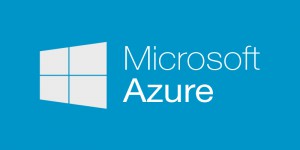
Our lives have become intricately intertwined with the digital realm in a world dominated by technology. From personal communications to financial transactions, our reliance on online platforms has grown exponentially. However, as we immerse ourselves in this digital revolution, we must also acknowledge the vulnerabilities that come with it. This is where Multi-Factor Authentication (MFA) swoops in, like a magical key, to unlock the digital fortress and empower us on our journey toward a secure and seamless digital experience.
Unleashing the Digital Revolution: Embrace the MFA Magic!
The power of MFA lies in its ability to fortify our online presence by adding additional layers of security. Gone are the days when a simple password was sufficient to keep our digital lives safe. MFA combines multiple authentication factors, such as passwords, biometrics, and one-time codes, to ensure that only authorized individuals gain access to our sensitive information. By embracing MFA, we protect ourselves and contribute to the collective effort of building a more secure digital ecosystem.
Beyond the realm of personal security, MFA opens the doors to a multitude of opportunities. It enables us to explore the vast landscape of the digital world without fear of falling victim to cyber threats. With MFA, we can confidently venture into e-commerce, online banking, and remote working, knowing that our digital fortress is impenetrable. By embracing this powerful tool, we empower ourselves to embrace the infinite possibilities of the digital age.
Blast Open the Gates: Let MFA Empower Your Digital Journey!
By embracing MFA, we unleash the true potential of the digital revolution. We liberate ourselves from the constraints of traditional security measures and step into a world where innovation and creativity thrive. MFA not only protects our digital identities but also provides a solid foundation for developing groundbreaking technologies. As we secure our digital lives, we can confidently explore emerging fields such as artificial intelligence, blockchain, and the Internet of Things.
Moreover, MFA bridges the gap between user experience and security. While traditional security measures often come at the cost of convenience, MFA strikes a harmonious balance between the two. With its diverse authentication factors, MFA ensures that our digital journey remains seamless and hassle-free, allowing us to focus on what truly matters – our aspirations and ambitions in the digital realm.
In a world where our lives are increasingly intertwined with the digital realm, it is essential to embrace the power of Multi-Factor Authentication. When we enhance the security of our online presence by adding extra layers of protection, we not only safeguard ourselves but also help to establish a more secure digital environment. With MFA, we can confidently embark on our digital journey, exploring new horizons and embracing the boundless possibilities of the digital revolution. So let us unlock the digital fortress, empower ourselves, and embrace the magic of MFA!
How to Enable MFA in Windows
Implementing MFA on Windows can be done in a few steps. First, you need to enable MFA in the account settings of the online service you are using. Major services like Microsoft Accounts or Azure Active Directory provide the option to enable MFA. After enabling, you will be prompted to verify your identity using a secondary method, such as a phone call, text message, or an authenticator app.
Once you’ve enabled MFA on your account, the setup on your Windows device will mostly be automatic. After entering your password, you’ll be prompted for your secondary authentication factor. Depending on the setup, this could be a code from your authenticator app, a fingerprint scan, or a prompt on your mobile device. Your device will remember your MFA setup and use it for future logins.
How to Enable MFA on an iPhone
To implement MFA on an iPhone, you first need to head to the ‘Settings’ app. Then, tap on your name at the top of the screen to access Apple ID settings. Scroll down to ‘Password & Security’ and tap it. Here, you can turn on ‘Two-Factor Authentication’.
After turning on two-factor authentication, you’ll be asked to enter your trusted phone number. This number will be used to send verification codes when you sign in on a new device or browser. Once you’ve verified your phone number, two-factor authentication will be turned on. You’ll now receive a verification code every time you sign into your Apple ID on a new device.
How to implement MFA on Android
Enabling MFA on an Android device is a straightforward process. If you’re using Google services, start by visiting the ‘Google Account’ section in your phone’s settings. Under the ‘Security’ tab, find the ‘2-Step Verification’ option and tap on it.
After tapping ‘2-Step Verification’, you’ll be prompted to enter your password. Once your password is entered, you’ll be directed to a screen where you can choose how you’d like to receive your second form of authentication: through a Google prompt, a text, or a call to your backup phone, or by using an authenticator app. Choose the option that suits you best, follow the prompted steps, and voila! You’ve enabled MFA on your Android device.





 In my previous post titled
In my previous post titled  Microsoft has introduced the new
Microsoft has introduced the new